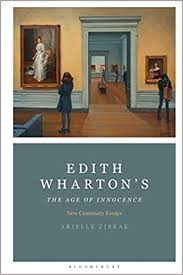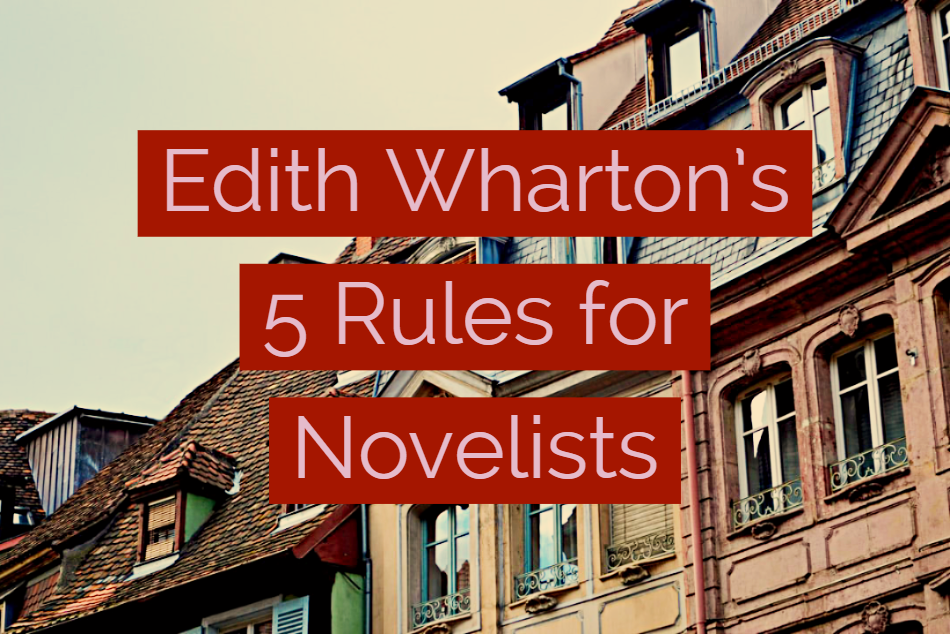by Arielle Zibrak
2020 marks the 100-year anniversary of the publication of Edith Wharton’s Pulitzer-prize-winning novel The Age of Innocence. Some of our most beloved present-day writers (e.g. Ta Nehisi Coates and Roxane Gay) have cited her as a major inspiration. Many of Wharton’s novels were immediate bestsellers, beloved by masses of readers and the most discriminating of critics alike. She is one of the only American writers to have enjoyed an uninterrupted success from the moment of her publication to the present day—her works are regularly assigned in literature classes across the world and her back catalogue still turns a strong profit for publishers. Almost any Wharton novel or short story is a master class unto itself and her guide to the craft, The Writing of Fiction, remains as forceful and direct today as it was back then.
So, without further ado, five rules for today’s novelists taken from Wharton:
1. Make time and be consistent.
Edith Wharton was a born writer. In her autobiography, she recounts a childhood practice she called “making up.” She would select a volume from her father’s well-stocked (but scarcely used) gentleman’s library and pace the halls of her childhood home on Manhattan’s West 23rd Street, pretending to read aloud from its pages. When the playmates her mother arranged to have over would arrive, young Edith would refuse to see them: “Mamma, you must go and entertain that little girl for me,” she reports having plead many times, “I’ve got to make up.”
Telling those childhood playmates to sod off was the beginning of a lifelong practice.
While Wharton loved visitors and visiting, entertaining and being entertained, she wrote nearly every single morning from the time she woke up to a steaming cup of hot chocolate delivered to her bedside until 11am. Her maid was on strict orders to allow no interruptions or distractions before that time. Even when she was staying at a friend’s house, she enforced this practice. More than once, she’d need to replace her host’s guest sheets as a result of spilled ink. (But she had great taste in sheets, so no one seemed to mind.)
While most of us don’t have maids or generous linen budgets like Wharton, it’s still possible for almost all of us to carve even one or two hours out of every day. Be sure to pick the time when your creative juices flow most freely (it was morning for Wharton, but maybe post-dinner or late-night is your moment) and the place where you feel the most comfortable and unrestricted (bed is not a bad choice). Whenever or wherever it is, make it known that you’re not to be disturbed.
Shut the door. And keep it consistent. This is not a once-or-twice a week habit. Every. Single. Day.
2. Know your scope.
This is a little different from “Write what you know,” a piece of advice that became ubiquitous in the later 20th century.
In fact, Wharton initially chafed at her friend Henry James’s suggestion that she write about the privileged, old New York world of her youth. For Wharton, knowing your scope is more about cultivating a self-honesty in regards to your own abilities rather than a commitment to only writing about the town where you grew up or giving your characters the same jobs as your family members.
Maybe you long to write a sweeping historical novel with 250 named characters, but are you really, truly up to that task? Especially for first-time writers, biting off more than you can chew scope-wise can quickly lead to an inability to render the grand panorama with as much skill as you might like.
“Perhaps more failures than one is aware of are due to this particular lack of proportion between the powers of vision and expression,” Wharton writes, “the only remedy is to abandon the larger for the smaller field . . . to do the small thing closely and deeply rather than the big thing loosely and superficially.”
If you’re struggling with a writing project, try eliminating some of the characters, sticking to one setting, or shortening the timeline of the plot.
Do less better.
3. Lead with your characters.
Wharton sets up a dichotomy between novels of situation and novels of character. She claims to prefer neither and recommend a synthesis. But it seems clear that for her, character reigns supreme. The main point is this: when a novel begins with an idea for an engrossing scenario (a congresswoman planted by foreign spies becomes a party favorite for the presidential successor!) the danger is to use the characters like puppets to drive the action forward.
Wharton urges that the author must “persist . . . in thinking of his human beings first, and of their predicament only as the outcome of what they are.” Do this through considering how their personalities determine their actions, in describing them and their surroundings and, above all, in writing dialogue. Cease to think of dialogue as “desultory chatter about the weather or the village pump” or, maybe more importantly, as a place to advance plot.
Dialogue is where we learn the most about your characters.
Imagine them fully. Then say what they would say.
4. Create peaks and valleys.
No one wants to sift through pages and pages of dull description where nothing happens, but neither does a compelling novel consist of one dramatic action after another.
In dealing with the difficult question of how to convey the passage of time, Wharton writes, “A study of the great novelists . . .will show that such changes are suggested, are arrived at, in the inconspicuous transitional pages of narrative that lead from climax to climax.” How should one write these pages? Wharton advises that writers should not be afraid “to go slowly, to keep down the tone of the narrative, to be as colourless and quiet as life often is in the intervals between its high moments.”
In art as in life, the high points are all the sweeter for having been made to wait for and anticipate them.
Plant a narrative seed and let readers wait for it to sprout. Remember that it might not be as fun to write the “intervals between,” but they’re just as important.
5. Have a point.
Wharton firmly did not believe that novels needed morals, but there must be something beyond a good yarn in your pages. “In one form or another there must be some sort of rational response to the reader’s unconscious but insistent inner question: ‘What am I being told this story for? What judgment on life does it contain for me?’”
Sure, many readers came to Wharton’s novels for their veiled depictions of famous New York socialites and rich descriptions of their lavish lifestyles. But The Age of Innocence is not “Keeping Up With the Kardashians,” and if it were, we wouldn’t still be reading it today. From Wharton’s novel we gain the eternal message that sometimes the path not taken is not taken for a reason, and within the context of adult life we often gain the most from the endeavors that initially seemed the least exciting. She contends the “good old days” were no better nor worse than today or tomorrow; it is ourselves, not the times, that change.
If you don’t have a little wisdom or insight, you don’t have any business writing a novel. Take what you’ve learned of life and pour it into your pages. The difference between a moral and a point is that a moral feels didactic whereas a point is something the reader can arrive at on their own. Don’t lay it on too thick, but keep it in your mind. The truth will out.
Which of these rules do you follow, and which are difficult for you? Share with us on Facebook.

 Arielle Zibrak is Assistant Professor of English at the University of Wyoming and the editor of Edith Wharton’s The Age of Innocence: New Centenary Essays. Her essays and reviews have appeared in The LA Review of Books, The Baffler, and several academic journals. Before receiving her PhD in English from Boston University, she worked as an assistant editor at Random House. She is currently at work on her first novel.
Arielle Zibrak is Assistant Professor of English at the University of Wyoming and the editor of Edith Wharton’s The Age of Innocence: New Centenary Essays. Her essays and reviews have appeared in The LA Review of Books, The Baffler, and several academic journals. Before receiving her PhD in English from Boston University, she worked as an assistant editor at Random House. She is currently at work on her first novel.





